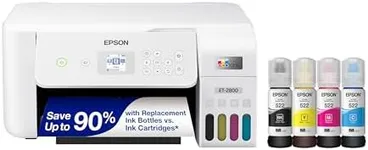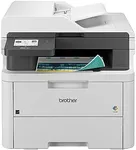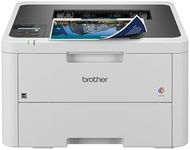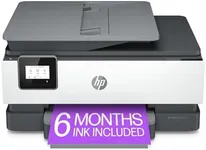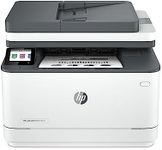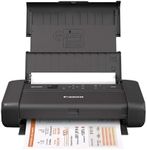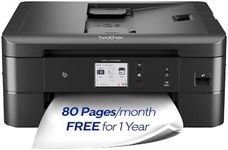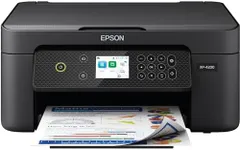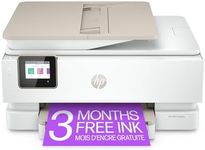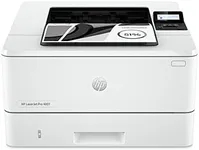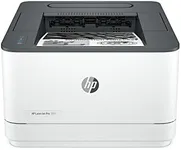Buying Guide for the Best Printer For Macs
Choosing a printer for your Mac is all about making sure it fits your needs and works smoothly with your Apple devices. Start by thinking about what you’ll print most often—documents, photos, or both. Compatibility with macOS is crucial, but most modern printers support Macs out of the box. Consider how you want to connect (wirelessly or with cables), how much you’ll print, and whether you need extra features like scanning or copying. By focusing on your daily tasks and how you like to work, you’ll find a printer that feels like a natural extension of your Mac.Compatibility with macOSThis refers to how well the printer works with your Mac’s operating system. It’s important because you want a printer that installs easily and supports all the features you need, like AirPrint or scanning. Most new printers are compatible with macOS, but it’s always good to check for official support and regular driver updates. If you use the latest macOS versions, make sure the printer’s manufacturer keeps up with updates. For older Macs, check that the printer still supports your system.
Connection OptionsConnection options describe how your printer links to your Mac—either through USB cables, Wi-Fi, Bluetooth, or even Ethernet. This matters because it affects where you can place your printer and how easy it is to print from different devices. USB is simple and reliable for one computer, while Wi-Fi and AirPrint let you print from anywhere in your home and from multiple Apple devices. If you want to print from your iPhone or iPad, wireless options are best. Choose based on your workspace and how many devices you want to connect.
Print Technology (Inkjet vs. Laser)This spec tells you whether the printer uses inkjet or laser technology. Inkjet printers are great for colorful photos and occasional printing, while laser printers are better for fast, sharp text and high-volume jobs. If you mostly print documents, a laser printer is efficient and cost-effective. If you want to print photos or graphics, inkjet is the way to go. Think about what you print most often to decide which technology fits your needs.
Print Quality (Resolution)Print quality is measured in dots per inch (DPI) and shows how sharp and detailed your prints will be. Higher DPI means better detail, which is important for photos and graphics. For basic documents, a lower DPI is fine, but for photo printing, look for higher DPI numbers. If you care about crisp images or professional-looking documents, prioritize higher print quality.
Print SpeedPrint speed tells you how many pages per minute (ppm) the printer can produce. This matters if you print a lot at once or often need things quickly. Lower speeds (under 10 ppm) are fine for occasional home use, while higher speeds (20 ppm or more) are better for busy households or small offices. Consider how often you print and how patient you are when waiting for your documents.
All-in-One FeaturesSome printers can also scan, copy, and fax. These are called all-in-one or multifunction printers. If you need to digitize documents, make copies, or send faxes, these features are useful. If you only need to print, a basic printer will do. Think about your daily tasks—if you ever need to scan or copy, an all-in-one is a smart choice.
Paper HandlingPaper handling covers the types and sizes of paper the printer can use, as well as how much it can hold at once. This is important if you print on special paper (like envelopes or photo paper) or need to print large batches without refilling. For basic home use, a standard tray is enough, but for frequent or varied printing, look for flexible paper handling and larger trays.
Operating Costs (Ink/Toner)Operating costs refer to how much you’ll spend on ink or toner over time. Some printers use cartridges that run out quickly, while others are more efficient. This matters because a cheap printer can become expensive if the ink or toner costs are high. If you print a lot, look for printers with high-yield cartridges or refillable tanks. If you print rarely, this is less of a concern.
